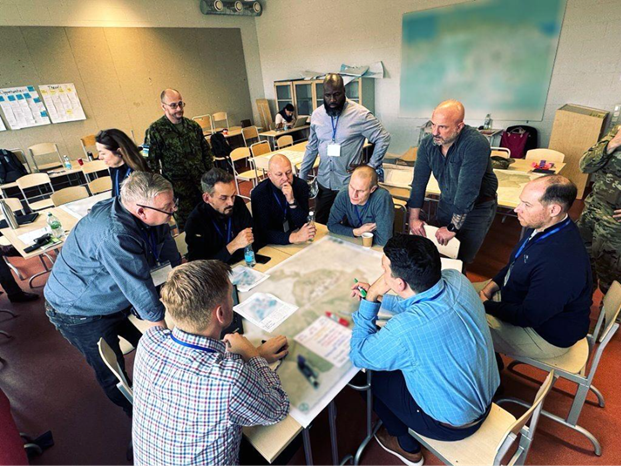An Introduction to Explosives Safety Standoff Distances
- Tyler Ross, PhD, PE

- Nov 24, 2021
- 3 min read
Updated: Jan 20, 2023
In the course of updating an Area Development Plan (ADP), participating in a design charrette, or completing other federal planning actions at US DoD installations, it is common to run up against an explosives safety restricted area on a base map. This often circular or cloud shaped boundary can envelope a large portion of a military base, leaving stakeholders to wonder what it is – after all, you cannot actually “see” the footprint on the ground! So, does it matter? What does this line (often referred to as an explosive “arc”) mean? Understanding what it is and what it is not can help planners make use of potential available space while also adhering to applicable safety regulations.
On a base master plan map, explosives hazard zones are delineated by a series of circular shapes, each originating from a separate explosives facility, or by a single shape that can be a composite of arcs generated from several facilities. This outermost hazard arc is the Inhabited Building Distance (IBD) arc. IBD is the distance at which all structures unrelated to the explosives operations must be kept. This applies to all public buildings, essential/critical utilities, and DoD operations that do not require immediate adjacency to the explosives (e.g., offices, administration areas, or shared break or training facilities). Figure 1 shows an example of composite arcs from several explosives handling and storage locations. The outermost arc in red is the composite IBD arc.

Figure 1 – Example explosives safety arcs (Courtesy US Navy)
The IBD varies for each explosives facility depending on the type and quantity of explosives or munitions. IBDs range from 100 ft for small quantities of burning material to thousands of feet for large quantities of detonating and fragmenting materials. If a building requiring an IBD standoff from explosives is too close (within the IBD arc of an explosives facility), either the explosives operation will not be allowed, the exposed structure will not be allowed to be constructed/used, or the amount or type of explosives needs to be reduced to an acceptable level.
What hazards exist within and at the IBD? Explosives arcs are commonly misinterpreted to mean that zero hazards exist beyond the delineated boundary, almost as if it is a forcefield of some type. In reality, there is risk to personnel and structures within, at, and beyond IBD. This is because IBD represents the standoff distance at which the expected hazards to life and property reach what the DoD has determined to be a tolerable threshold. If personnel were required to be at standoff distances that provide nearly complete protection, these standoff distances would be multiple times larger, making nearly all DoD explosives-related operations infeasible.
Consequently, hazards do exist at IBD and beyond. For this reason, additional regulations apply when seeking to construct a building near an IBD arc. For example, a glass breakage assessment is required when structures are planned near an IBD arc, even if beyond IBD. Restrictions on critical facilities (e.g., hospitals, emergency response centers, etc.) and other high-occupancy structures may prevent them from being located near IBD arcs as well.
At the IBD boundary, personnel could experience eardrum damage, glass hazard from broken windows, and a 1% chance of being struck by a fragment large enough to seriously hurt or kill a person. Historically, the hazards associate with glass breakage are overwhelmingly the most common at IBD. Though it may seem counterintuitive, it is statistically safer to be out in the open at IBD than to be inside of a standard-construction building with windows at IBD.
Some activities are allowed within IBD. A Public Traffic Route Distance (PTRD) arc is defined as 60% of the distance of an IBD arc (for most explosives). In Figure 1, the second largest arc is green, representing the required PTRD standoff. The radial distance of this arc, measured from the explosive location, is approximately 60% of the IBD (some exceptions depending on explosive type). Open-air activities that are transitory in nature (e.g., walking/driving paths, some sports and other recreation spaces) are also allowed within IBD, and as close as a PTRD (i.e., outside of the green arc), as long as these areas and functions do not require structures (e.g., bathrooms, bleachers, etc.) and do not cause people to congregate.
Understanding the hazards associated with specific explosives arcs can allow planners to utilize on-base open spaces more efficiently while avoiding scenarios that could increase risk to personnel and assets.
Future blog posts will examine how planners can work around these challenges, with examples of facility types and uses that are allowable within or near each type of explosive arc.



Comments